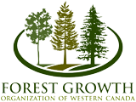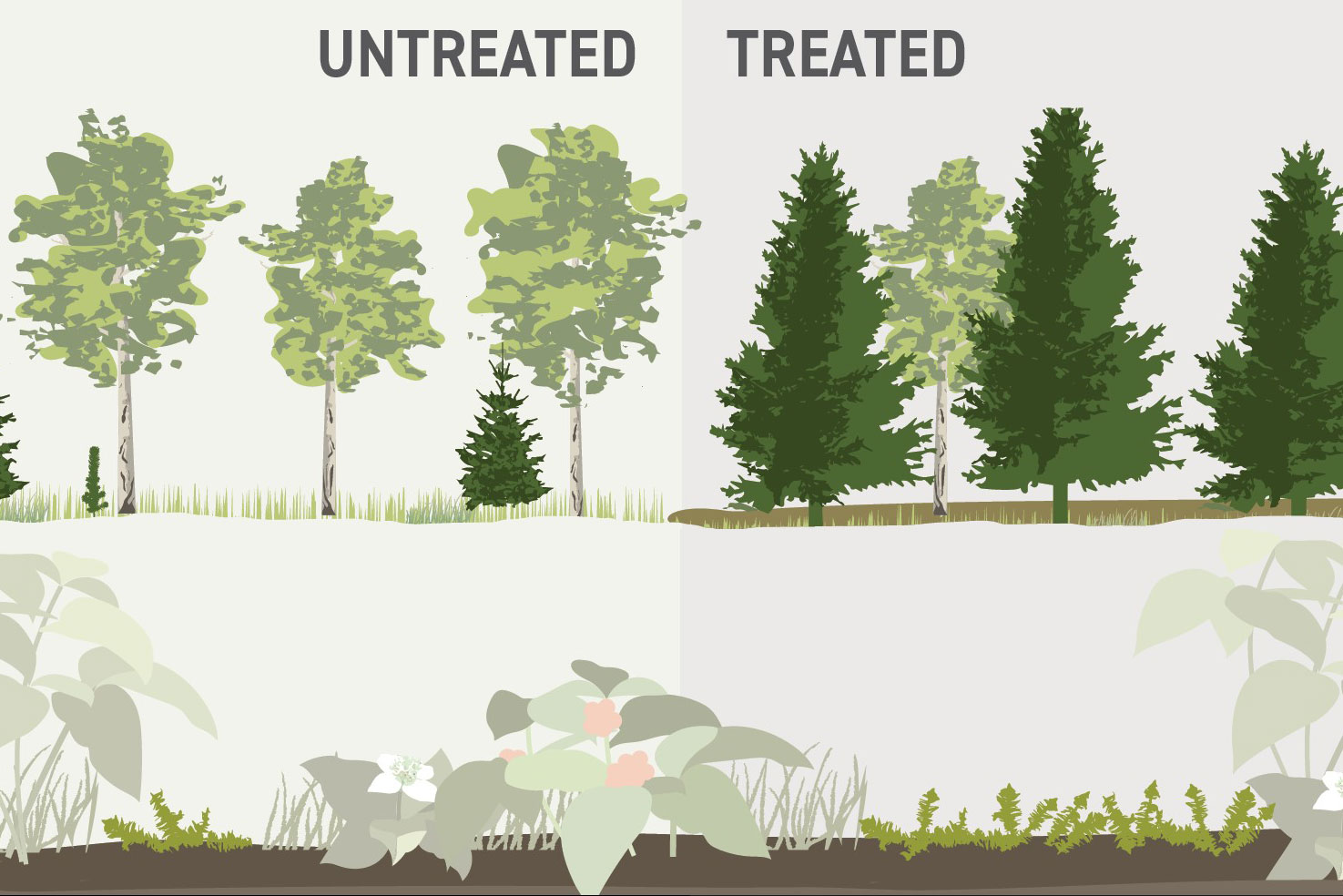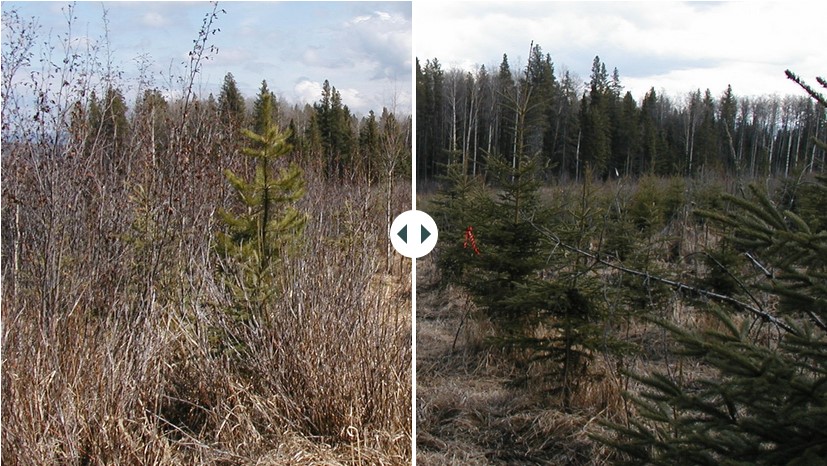The use of chemical herbicides (primarily glyphosate) for competition control is a common practice for reforestation of harvested conifer stands in much of Alberta, yet it remains controversial for many. While there is an abundance of research that has focused on the short-term effects of herbicide use on both tree growth and non-tree vegetation, there is a notable knowledge gap on the long-term effects of herbicide use on regenerated forests.
The Forest Growth Organization of Western Canada (FGrOW) has addressed this gap by evaluating the long-term (25–40 years post-harvest) effects of herbicide use on both biodiversity and wood fibre production in regenerated blocks. These blocks were originally treated as part of the “Go-slow” herbicide adoption and monitoring process implemented in the mid-1990s in Alberta, and they include a minimum one-hectare untreated area within a cutblock treated with herbicide. Although the Go-slow program
and its monitoring requirement have since ended, some installations remain in place, and sites for this study were selected from that pool.
This guidebook is intended to facilitate guided and self-guided tours of the research sites and plots included in this study. It provides directions to the young forest stands that were characterized for this project; for each, it summarizes the block history (from official reforestation treatment records) and differences in biodiversity and fibre volumes between treated and untreated portions of each block. Each site also includes a high-resolution aerial composite orthograph showing the untreated and treated
portions of the block and the plot locations.










